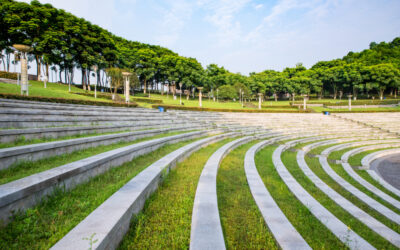After we have settled the essential approaches, levels, and enclosures for shelter, privacy, or dividing lines around a house, the natural form or lines of the earth herself are in nearly all cases the best to follow, and in our work we face any labour to get the ground back into its natural level or fall where disfigured by ugly banks, lines, or angles.
In the true garden on the hills we have to alter the natural line of the earth or “terrace” it, because we cannot otherwise cultivate the ground or move at ease upon it. Such steep ground exists in many countries, and where it does, a like plan must be followed. The strictly formal in such ground is as right in its way as the lawn in a garden in the hills. But the lawn is the heart of the true garden, and as essential as the terrace is to the gardens on the steep hills. lawns have too often been destroyed that “geometrical” gardens may be made where they are not only needless, but harmful both to the garden and home landscape. Sometimes on level ground the terrace walls cut off the view of the landscape from the house, and, on the other hand, the house from the landscape!
we hold that it is possible to get every charm of a garden and every use of a country-seat without sacrifice of the picturesque or beautiful; that there is no reason why, either in the working or design of gardens, there should be a single false line in them. By this I mean hard and ugly lines such as the earth never follows, as say, to mention a place known7 to many, the banks about the head of the lake in the Bois de Boulogne. These lines are seen in all bad landscape work, though with good workmen we find it is as easy to form true and artistic lines as false and ugly ones. Every landscape painter or observer of landscape will know what is meant here, though I fear it is far beyond the limits of the ideas of design held by the authors of the Formal Garden. Also, that every charm of the flower garden may be secured by avoiding wholly the knots and scrolls which make all the plants and flowers of a garden, all its joy and life, subordinate to the wretched conventional design in which they are “set out.” The true way is the opposite. We should see the flowers and feel the beauty of plant forms, with only the simplest possible plans to ensure good working, to secure every scrap of turf wanted for play or lawn, and for every enjoyment of a garden.




0 Comments